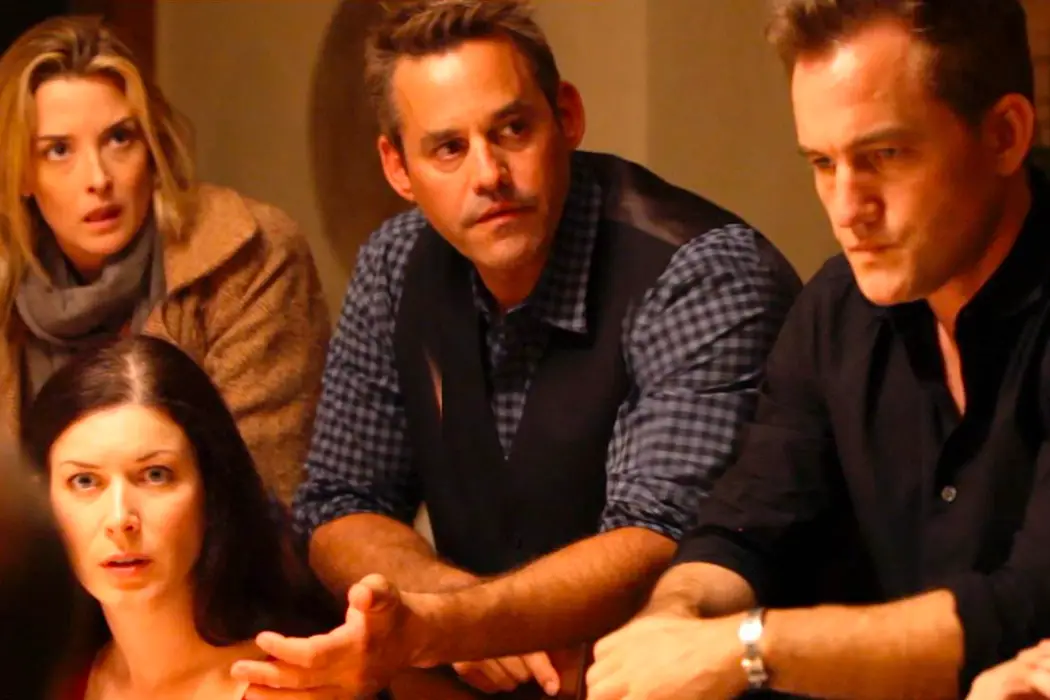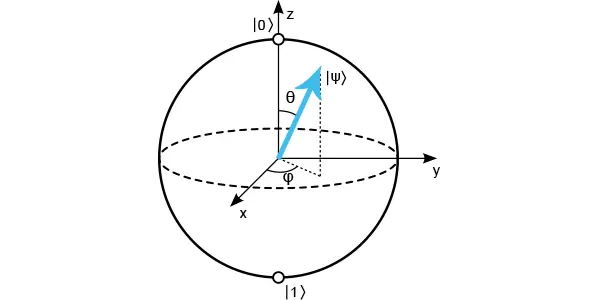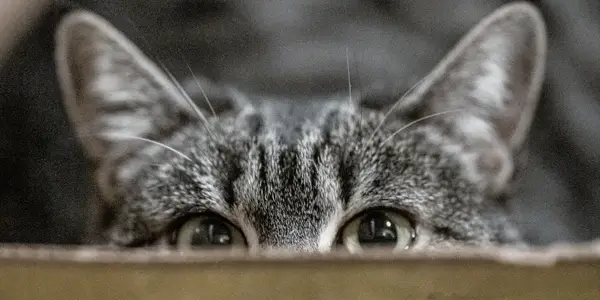Fantasy Science Pt. 28: COHERENCE & Schrödinger’s Cat

Radha has a PhD in theoretical quantum physics. Apart from…
Have you ever heard the term Schrödinger’s Cat casually mentioned in sci-fi films and tv and wondered just what the heck it is? Have you wondered just how accurately these films portray real science? Well, my friends, this column is for you! Fantasy Science & Coffee, aims to bridge the gap between science and science fiction in films and popular culture. My hope is to explain things in a fun way – like we’re chatting over coffee.
You may be thinking: who is this person, why does she think she can explain science, and why the heck would I want to have coffee with her? Well, I’m Radha, a quantum physicist. I quite like hot beverages. I’ll also pay.

Last time on Fantasy Science, I published a free guide to quantum physics for the sci-fi writers among you who want to add a bit of quantum oomph to your screenplays and stories. This time, in this twenty-eighth part of the series published on the second Tuesday of every month, we’re going to chat about something that keeps making an appearance in just about any science fiction that has anything to do with quantum physics, such as in the 2013 film Coherence. I’m talking about Schrödinger’s cat. Spoiler: it’s not a real cat.
Disclaimer: no cats were harmed during the writing of this article.
Schrödinger’s Cat in Coherence (2013)
The 2013 film Coherence by James Ward Byrkit depicts what is at first a standard dinner party among friends in a quiet suburban neighborhood. A comet in the sky, however, causes adverse consequences: they find themselves face to face with their selves from alternate realities. The group tries to make sense of the bizarre situation by reading the notes of a physics professor. This is where Schrödinger’s cat comes into the picture:
There’s a cat in a box that has, like, a 50/50 chance of living because there’s a vial of poison that’s also in the box. So, regular physics would say that it’s one or the other. That the cat is either alive or dead. But Brian would argue that quantum physics says that both realities exist simultaneously. It’s only when you open the box that they collapse into a single event.
They go on to discuss another possibility, that instead of simultaneous states collapsing to a single event, there are multiple realities:
There is another theory: that two states continue to exist separate and decoherent from each other, each creating a new branch of reality based on the two outcomes. Quantum decoherence ensures that the different outcomes have no interaction with each other…So we’re in the box. We’re the cat. We’re both alive and dead. So, there are two separate realities, presumably until the comet passes.
That the different branches of reality are usually independent but are now somehow overlapping due to the comet appears to be the explanation behind the movie. This context has a very real basis in quantum physics, in the form of quantum superposition. And the famous thought experiment by physicist Erwin Schrödinger was a response to one of the interpretations of what may be happening when someone observes superposition. So before we chat about Schrödinger’s cat, let’s talk a bit about superposition and what is known as the qubit.
The Qubit and the Bloch Sphere
In classical computers, like the device you’re using to read this, all information can be broken down into bits which can take on one of two values: 0 or 1. The fundamental computing unit of a quantum computer works a little differently and is called a quantum bit or qubit. It can not only take a value of 0 or 1, it can also be in what is known as a superposition state, which is a probabilistic superposition of a 0 and 1. Qubits are forced to become one or the other when we need to take a look at them, that is, they end up looking like classical bits. This apparent transition from quantum to classical is called decoherence. So, if you have a hundred qubits that are in a 50-50 superposition of 0 and 1, then when you measure them, i.e., ask them for information, about half will say 1 and half will say 0.
A qubit can be represented by what is known as the Bloch sphere. The top, corresponding to the North Pole if the sphere were Earth, is the state 0. And the South Pole is the state 1. The blue arrow marked with the greek letter psi is an arbitrary state of the qubit.

Quantum computing basically involves manipulating the probabilities in a qubit’s superposition state by moving the blue arrow around the sphere. For instance, for a 50-50 superposition it would lie halfway between 0 and 1. Once the arrow is successfully moved around, we measure the qubit, that is, extract information from it, and the arrow moves to point to either the North Pole or the South Pole, with likelihoods depending on the state it had been in. For instance, if a qubit had a 5% chance of becoming a 0 and a 95% chance of becoming 1, then after measurement it would most likely become a 1 – but it could also become 0. And, according to something called the Copenhagen interpretation, before measurement, the qubit’s reality was not definite: after measurement, it ‘collapses’ to one of the two.
This is where Schrödinger’s thought experiment comes in.
Schrödinger’s Cat
In 1935, Erwin Schrödinger published a paper called “The Present Situation in Quantum Mechanics” (originally published in German). In the paper, he proposed a thought experiment that involved a cat, which is a macroscopic object. This thought experiment wasn’t to demonstrate the funkiness of quantum physics, it was a push back to the Copenhagen interpretation, by hypothetically extrapolating quantum effects on a microscopic level to everyday macroscopic objects.
The original thought experiment involved a cat and poison, but I will follow the example of Caltech physicist Sean Carroll, and use sleeping gas instead. Because we don’t really need to talk about dead cats, now, do we?

It goes something like this:
Place a cat in a box along with a special quantum apparatus. The apparatus consists of a quantum system that’s in a superposition state, and a vial of sleeping gas that either breaks or doesn’t break according to the superposition. For the sake of this illustration, let’s pretend that the quantum system is a single qubit in a 50-50 superposition of 0 and 1, and the vial remains intact if the qubit is 0 and breaks if the qubit is 1. The cat is, therefore, in a superposition state of awake and asleep, its state entangled with that of the quantum system, until you open the box and observe it, observation being the measurement. The cat’s reality is undetermined prior to the opening of the box. And Schrödinger was basically like: you can’t really believe that before you open the box the cat is in a superposition of awake and asleep!
In the original paper, the quantum apparatus was a radioactive substance that had a 50-50 chance of decaying within an hour. Here is the excerpt from the translated version:
One can even set up quite ridiculous cases. A cat is penned up in a steel chamber, along with the following device (which must be secured against direct interference by the cat): in a Geiger counter there is a tiny bit of radioactive substance, so small, that perhaps in the course of the hour one of the atoms decays, but also, with equal probability, perhaps none; if it happens, the counter tube discharges and through a relay releases a hammer which shatters a small flask of hydrocyanic acid. If one has left this entire system to itself for an hour, one would say that the cat still lives if meanwhile no atom has decayed. The psi-function of the entire system would express this by having in it the living and dead cat (pardon the expression) mixed or smeared out in equal parts.
Quick side note: I do so adore how he inserted “pardon the expression” when speaking of a dead cat. Now back to the thought experiment. There are, of course, many issues with it! (Apparently, the late Stephen Hawking said: “When I hear about Schrödinger’s cat, I reach for my gun.”) For instance, the cat is not a microscopic quantum particle, and there are many factors like the environment that can force the system to be ‘measured’ prior to you opening the box – a little wind, some microscopic critters on the insides of the box, the Geiger counter itself performing a measurement, you get the point. It’s difficult to think of such a system as truly quantum. But we needn’t get into the issues here because the point of our chat today is to describe the thought experiment.
There are other ways of looking at this hypothetical scenario; the Copenhagen interpretation is not the only interpretation of quantum physics, though it’s the most commonly taught. The Many Worlds Interpretation, which the film Coherence seems to refer to though not by name, involves the various components in a superposition decoupling from one another, evolving independently, and existing in their own classical realities – which may be attributed to decoherence. For Schrödinger’s cat, this means that in one reality, if you open the box you will find the cat asleep. And in another reality, another you will find it wide awake. If you were in the fictional universe of Coherence, and a comet happened to be flying overhead, you may see both, since comets can apparently cause different parts of a superposition to interfere with one another – which makes for very interesting dinner parties.
More to Explore
Articles
ThoughtCo: Understanding the “Schrödinger’s Cat” Thought Experiment (2019)
National Geographic: The Physics Behind Schrödinger’s Cat Paradox (2013)
Papers
E. Schrödinger. “Die gegenwärtige Situation in der Quantenmechanik“. Naturwissenschaften. (1935) (Translation by J. D. Trimmer published in 2014.)
Books
B. Greene. “The Hidden Reality: Parallel Universes and the Deep Laws of the Cosmos by Brian Greene.” Vintage. (2011)
G. Bacciagaluppi. “The Role of Decoherence in Quantum Mechanics.“, The Stanford Encyclopedia of Philosophy (2003)
Videos
MWI has been very interestingly discussed in the cat context by Sean Carroll in his talk at Google. I urge anyone interested to take a look!
Talks at Google: Sean Carroll: “Something Deeply Hidden: Quantum Worlds & the Emergence of Spacetime” (Schrödinger’s cat mentioned at 21:31 onwards)
MinutePhysics: Schrödinger’s Cat (2011)
Does content like this matter to you?
Become a Member and support film journalism. Unlock access to all of Film Inquiry`s great articles. Join a community of like-minded readers who are passionate about cinema - get access to our private members Network, give back to independent filmmakers, and more.
Radha has a PhD in theoretical quantum physics. Apart from research, she consults on sci-fi screenplays/books. In her free time, she cosplays and irritates her three cats. Bug her on Twitter: @RadhaPyari













